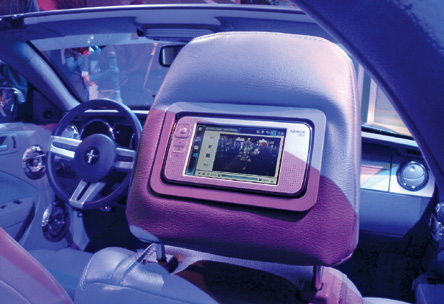Industrial automation and home automation systems are also a huge market for the embedded Internet industry. Internet-capable measurement instruments as well as machinery are used extensively today—to feed data live to centralised IT solutions, for monitoring and adjusting processes as well as for decision-making. Likewise, energy management systems, intelligent lighting solutions and premise security applications utilise a lot of Internet-capable devices. Some CCTV camera models, for example, come with Internet capability, and the output of these can be viewed from any remote PC or mobile phone.
Prof. Anupama remarks, “The trend will move towards military and industrial applications where embedded devices will begin to meet more and more real-time demands. After a certain period of advancement, the trend will move more towards implementing the embedded devices for day-to-day needs like traffic monitoring, precision agriculture, water resources management, resource mining, etc.”
Basic components—not too different
Like all computers, embedded systems also comprise processors, operating systems and software stacks—just that they use small and barebones versions of everything, so that the footprint in terms of size, power, etc, is small enough to be embedded into another device. To add Internet-capability, the system would also have to include a modem and the relevant software stacks to establish connection. Depending on the application, other software or hardware components might be added. For example, a mobile phone might also include e-mail clients, browsers, special purpose players, etc.
As far as the Internet capability goes, again the components draw a parallel with regular computers—only the footprint matters. “There would be nothing special in terms of hardware. Most of the devices use a Wi-Fi chip and/or a 3G modem, which would be connected to the host processor. Thanks to the open source revolution, all the necessary software stacks to establish a Transmission Control Protocol/Internet Protocol (TCP/IP) connection with driver support are available readily. It is a lot easier and cheaper to design a ‘connected’ system in today’s embedded world,” says Mani.

Prof. Anupama adds, “The technology used to access the Internet could also be GPRS, Bluetooth, ZigBee, WiMAX, etc. It is again specific to the application. But generally, embedded systems with Internet communication will employ hardware accelerators to meet the demands of data transfers and the time-criticality of the data. Since the processing required for Internet-equipped embedded devices is more than the standalone devices, the processors used in these devices are also advanced.”
Protocols, old and new
Asked about the networking protocols preferred by embedded Internet systems, Mani says, “Similar ones as used in computers. TCP/IP, IPv4, IPv6, SIP, etc, are the protocols used for embedded applications as well. The only difference is that these stacks are optimised to fit on small footprint devices.”
Sable adds, “At the core level, TCP/IP is predominantly used. At the application level, HTTP, FTP, RTP, RTSP and SSL are some of the widely-used protocols.”
As mentioned, IP is one of the most commonly-used protocols, even for embedded systems. IPv4, the dominant protocol of the day, uses a four-byte addressing system that can give unique addresses to 232 systems. However, these addresses are fast running out, and will certainly not be sufficient when we move closer to the Internet of Things. Hence a newer version called IPv6 that uses a 16-byte addressing system has been released and has also started being deployed. It is more likely that Internet-capable embedded systems in the future will be using IPv6—the trend is likely to begin with electrical appliances.
This brings us to the question of whether even a 16-byte address would be enough if every oven, fridge, washing machine and even perhaps bicycles and radios were to be Internet-capable. In an article on the subject, Clive Max-well, writes: “According to calculations and estimations performed by the folks at the University of Hawaii (who obviously have far too much time on their hands), if we account for all of the beaches around the world, together they contain around 7.5×1018 grains of sand. Thus, the addressing space of IPv6 is sufficient to give each grain of sand its own unique IP address—and to do this for approximately 5×1019 Earth-like worlds—so I don’t think we’re going to run out of IPv6 addresses in the foreseeable future.”
Apart from this, there is also a class of low-power wireless personal area network (LoWPAN) protocols. In such networks, the nodes are very small and may be powered by an 8-bit, 16-bit or 32-bit microcontroller with 64kB or more of Flash memory. The most commonly used underlying transport protocol is defined by the IEEE 802.15. standard, and the packets of data are only 127 bytes in size.






